
BACK TO TOP
Chikankari to Chitai Jewellery: Explore Newer Art Forms in 2025
| 31st Jan 2025
Sift through stunning stories and souvenirs that shine a light on India’s vibrant craft traditions at these all-new pavilions of Swadesh.
Few things can match the joy of stumbling upon unique artforms and uncovering the stories behind them – and what better time to set out on this fascinating journey than the start of the year? Step into the reimagined pavilions of Swadesh – NMACC’s India-inspired art & craft exhibit – to discover an all-new trail of artistic treasures from the far corners of the country. This immersive experience has something for everyone – the silken swish of Chikankari & Mukaish work on fabric, the vibrant allure of botanical motifs on Sozni & Kal Baffi carpets, novelty home décor and collectibles like Kalighat painting & Bengal Patachitra and Dhokra art, the silver glimmer of Chitai jewellery, the UNESCO-recognised artistry of Pochampally Ikat & Puttapaka Telia Rumal, or the intricate decorations of Tarkashi.
Come, travel through the streets of Uttar Pradesh, Rajasthan, West Bengal, Chhattisgarh, Telangana, and Kashmir – and take home some lovingly curated slices of Indian history. Before we delve into the individual artforms, here’s a pro tip: Linger back for captivating live demonstrations by talented artisans who weave, paint, and create magic in real time!
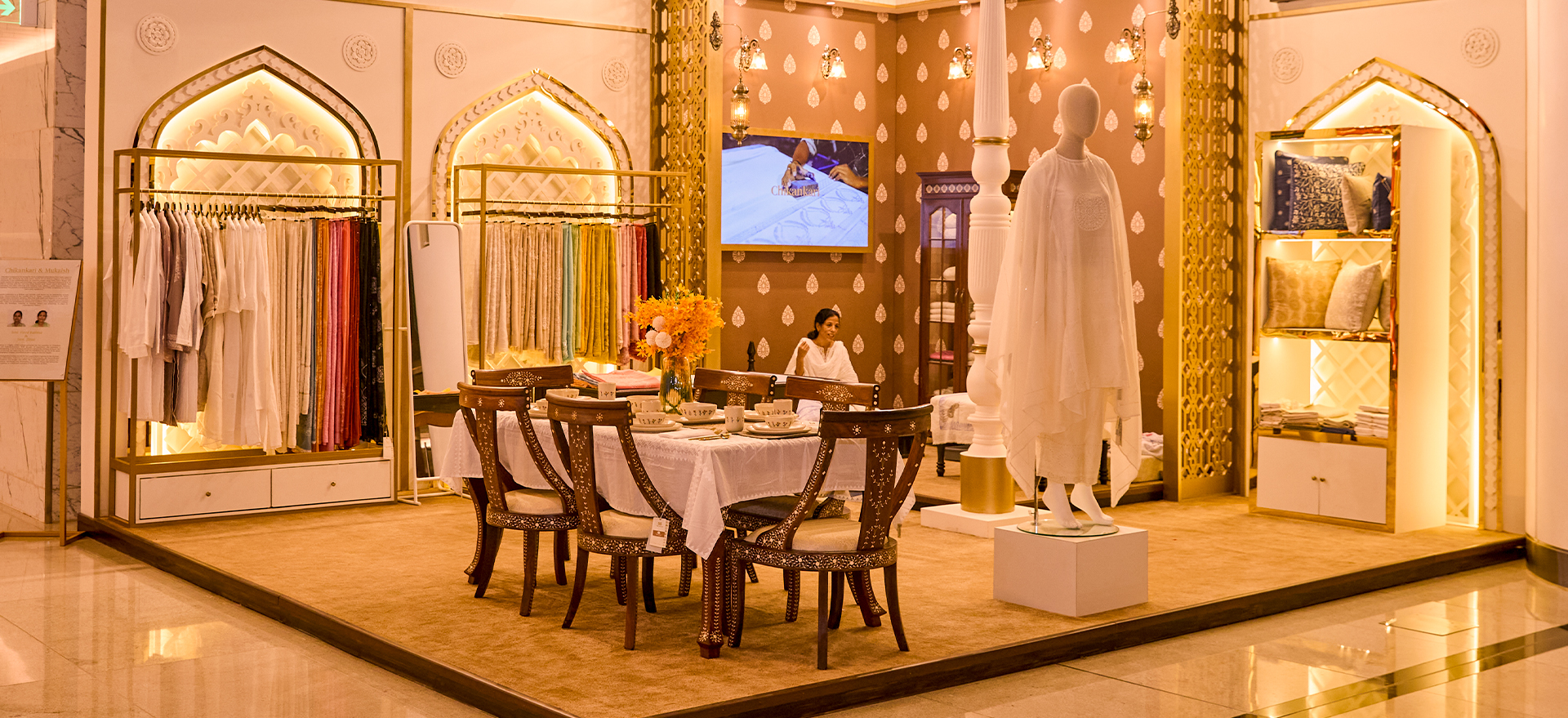
Chikankari & Mukaish
Chikankari, a renowned hand embroidery technique from Lucknow, has enjoyed a rich historical significance in the courts of Awadh. More than two-centuries old, this exquisite embroidery style is famed for its timeless elegance and delicate appearance. Typically, chikan embroidery is woven on colourless muslin known as tanzeb, using a white untwisted cotton thread. Common motifs of the art form, which consists of 40 different types of stitches, include trailing vines, the betel leaf or the heart shape, as well as paisley. It is said that the craft came to India from Persia – the word ‘chikan’ derived from ‘chikaan’, the Persian word for drapery. Mukaish, on the other hand, is an ancient embroidery technique from Lucknow that is gradually disappearing. It involves inserting thin metallic wire strips into fabric and then twisting them to create dainty embroidery. Chikankari is often embellished with mukaish work – an expression of understated elegance.
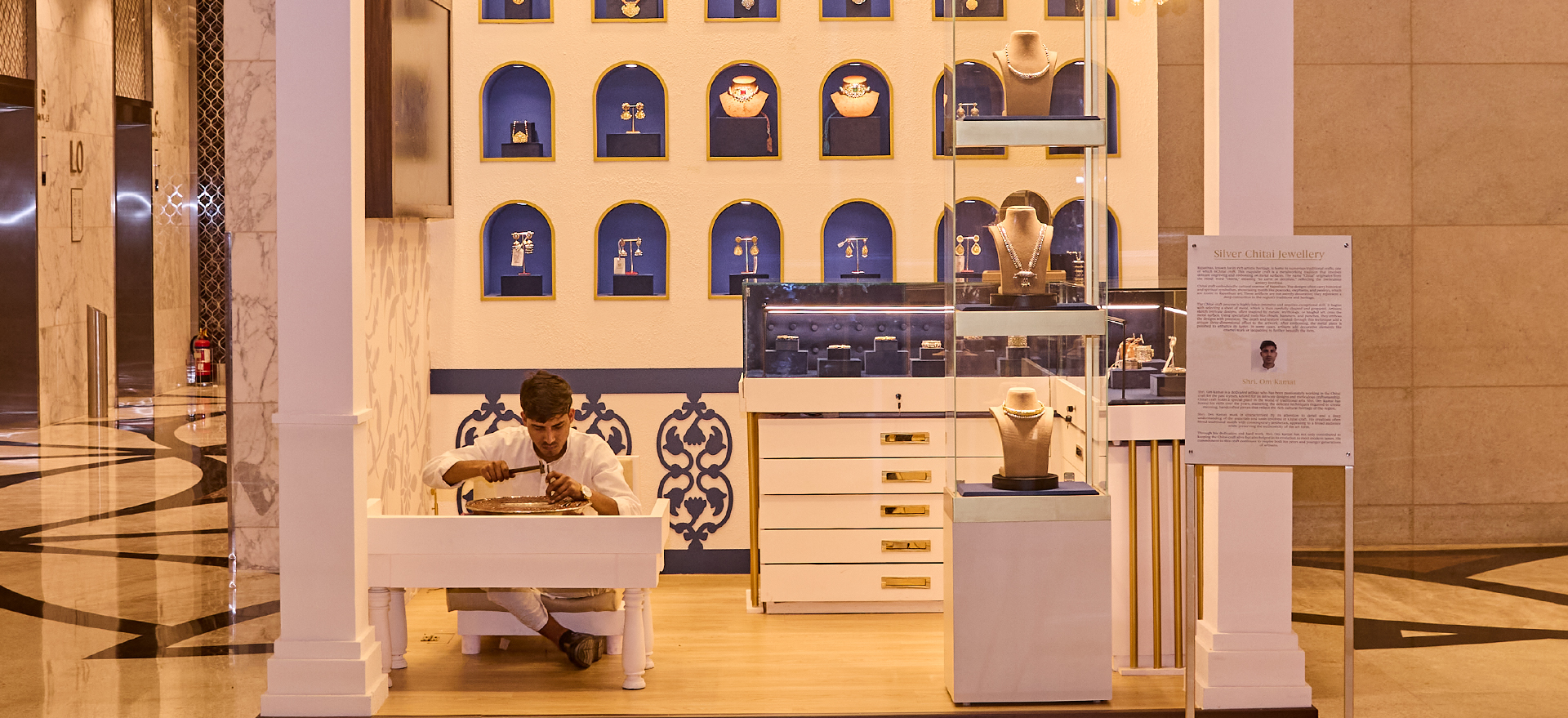
Chitai jewellery
Chitai, a traditional silver craft from Rajasthan, is celebrated for its intricate artistry and precise handwork. The craft transforms plain silver sheets into stunning masterpieces through meticulous engraving techniques, entirely done by hand. Skilled artisans employ specialised tools such as gravers and chisels to carve detailed motifs, each unique piece embodying the cultural essence of Rajasthan. Chitai work represents hours of dedication, the artisanal creativity often materialising as heirloom-worthy neckwear, earwear, or wristwear.
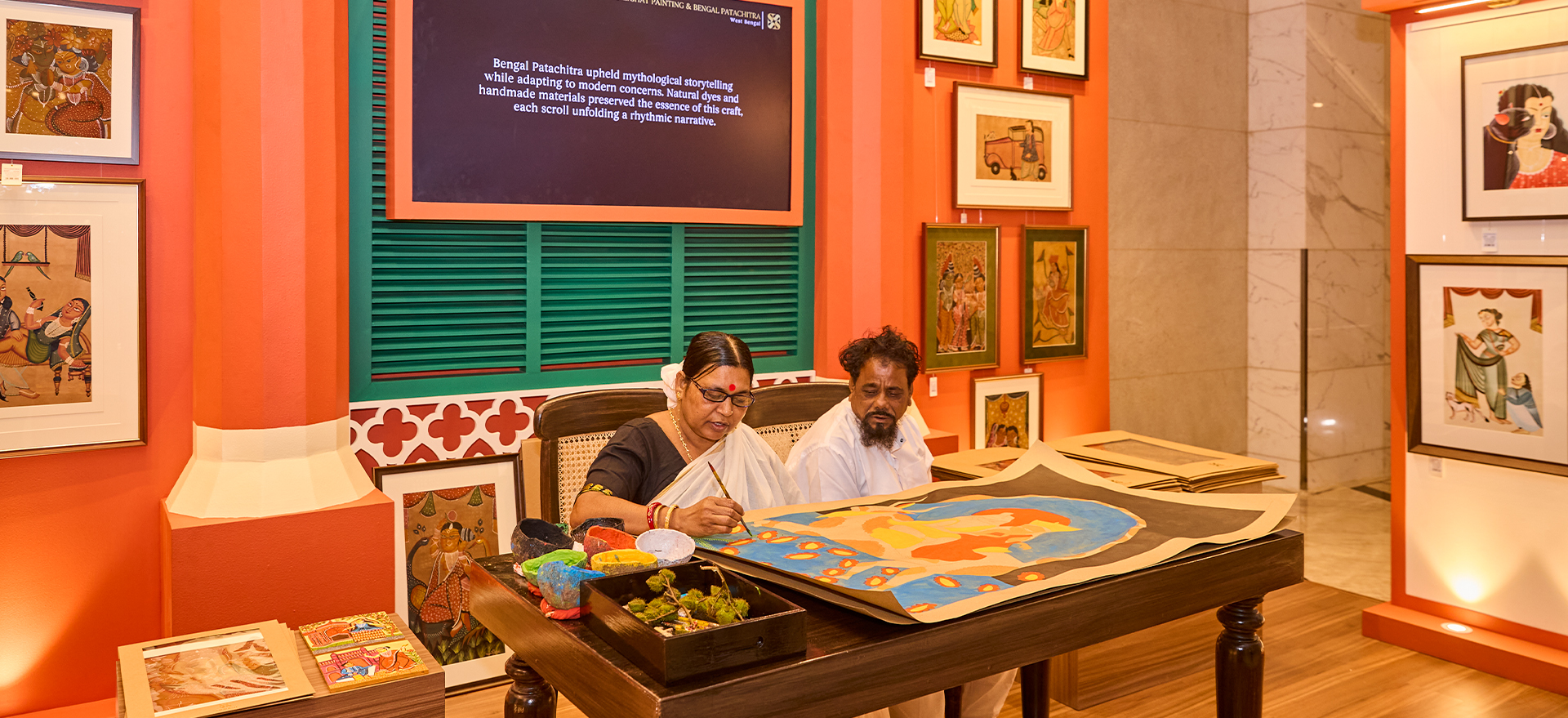
Kalighat Painting & Bengal Patachitra
Originating in the 19th century, Kalighat Painting was practiced by the patuas, a group of specialised scroll painters from Kalighat – a place in Kolkata that shares its name with a renowned Kali temple. The visually stunning art form, often replicated in wall plates and wall hangings, depicts mythological and religious stories, tales of folklore, as well as secular and contemporary social narratives. Once merely souvenirs for temple visitors, the vast scope of this artform added to its widening appeal and distinct artistic legacy over the years. The patuas being keen observers of life, the artform documented social oddities, idiosyncrasies, and hypocrisies across time, including the rise of ‘Babu culture’. This resulted in the artform’s strong connection with Bengal Patachitra – traditional painted frames on long scrolls, dealing with similar social themes. Today the art form has found its stronghold in rural parts of West Bengal’s Midnapore and Birbhum districts, where the ancient practices have been kept alive by contemporary artists called chitrakars.
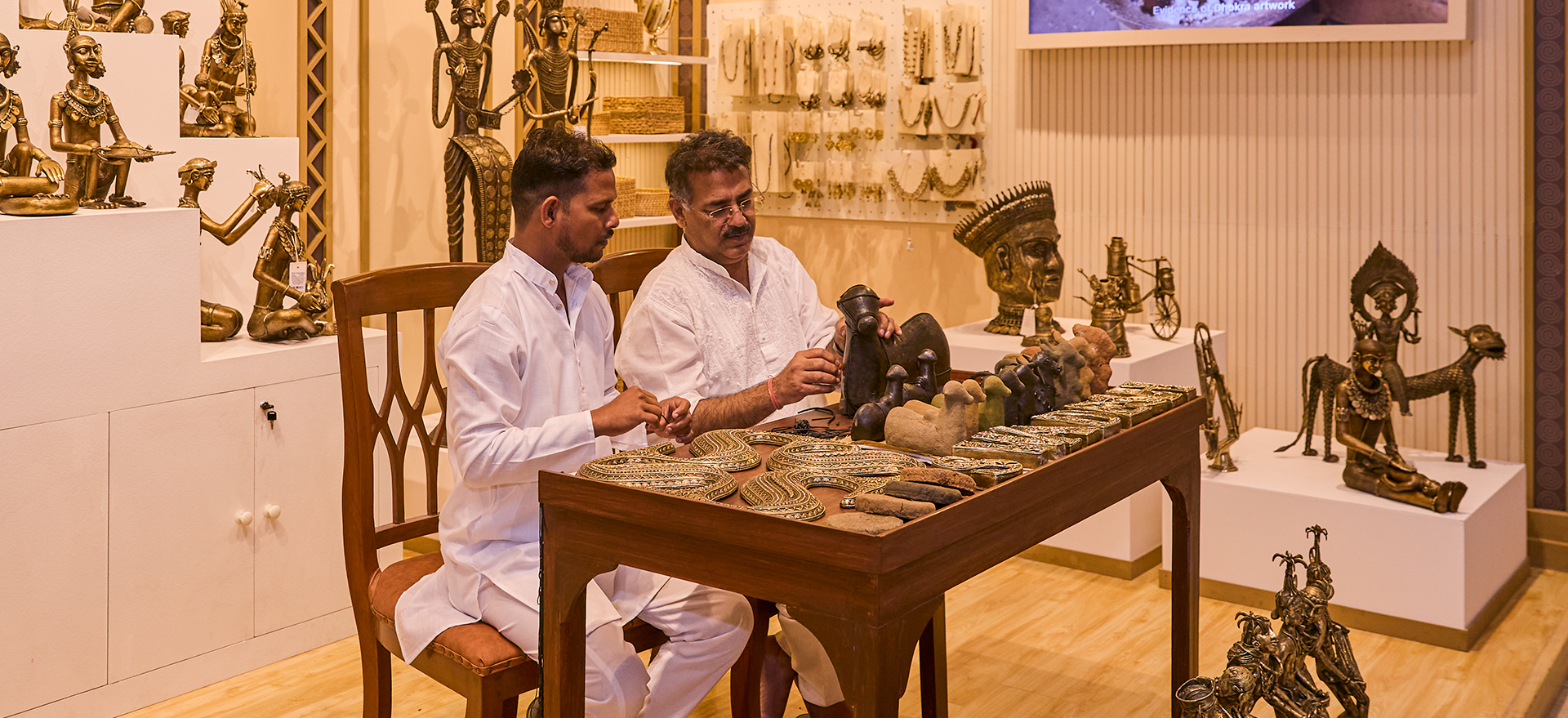
Dhokra Art
Native to the state of West Bengal, Dhokra craft is believed to be one of the oldest forms of metal casting in the world with a history that dates to 4,000 years. To prepare dhokra art, a layer of wax is applied to a clay core. The wax is then carved into intricate designs, with another layer of clay applied over it. The clay mold is heated, causing the wax to melt and flow out, leaving behind an empty cavity into which molten metal such as brass or bronze are poured. Once the cast has cooled and solidified, the clay is broken away to reveal the finished design. Loved for its rustic and earthy appearance, dhokra art often depicts animals, birds, and other elements of nature, along with folk tales and mythological stories. Swadesh puts the spotlight on a gorgeous line of dhokra sculptures, jewellery, and décor pieces made by artisans from Chhattisgarh, where the art form has flourished over the years.
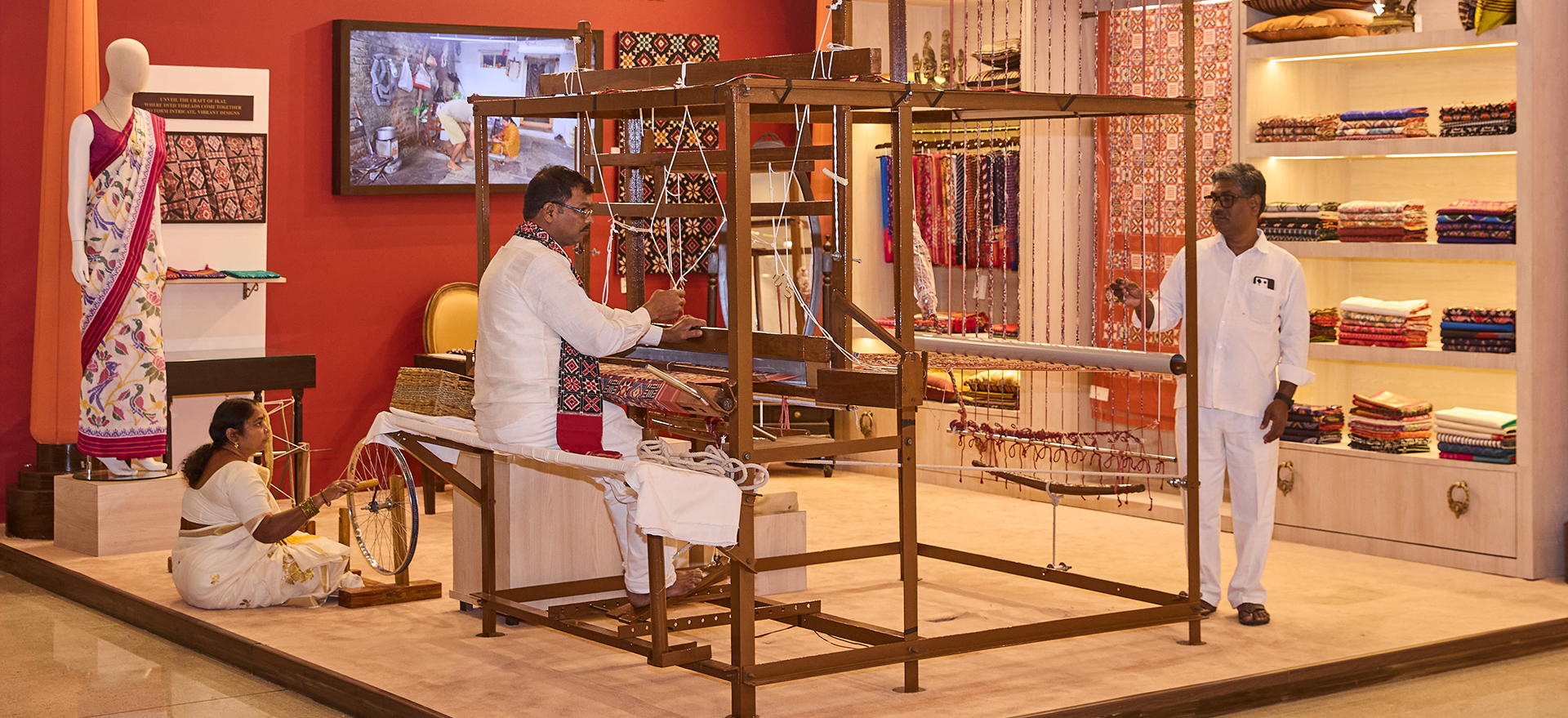
Pochampally Ikat & Puttapaka Telia Rumal
In Andhra Pradesh, a type of cloth that features patterns created by tie-resist-dyed yarns is called paagadu bandhu, commonly known as ikat. The Pochampally region is well-known for its traditional looms that have been producing intricate designs for centuries. The fabric used can be cotton, silk, or a mix of silk and cotton, and its colours are sourced from natural sources or their blends. UNESCO has recognised the significance of this age-old craft by including Pochampally in the tentative list of world heritage sites under the category of ‘iconic saree weaving clusters of India’. Nurtured in the Telangana’s Puttapaka handloom cluster, the Telia Rumal is a unique tie and dye technique that uses oil to treat yarn, imparting a distinct softness and the smell of gingelly oil. While originally patterns were limited to simple geometric or botanical motifs, more complex weaving patterns depict birds, lions, elephants, and even aeroplanes. The base textile too, has evolved from handkerchief-sized canvases to beautiful Telia dupattas, sarees, and dress material created using the same technique.
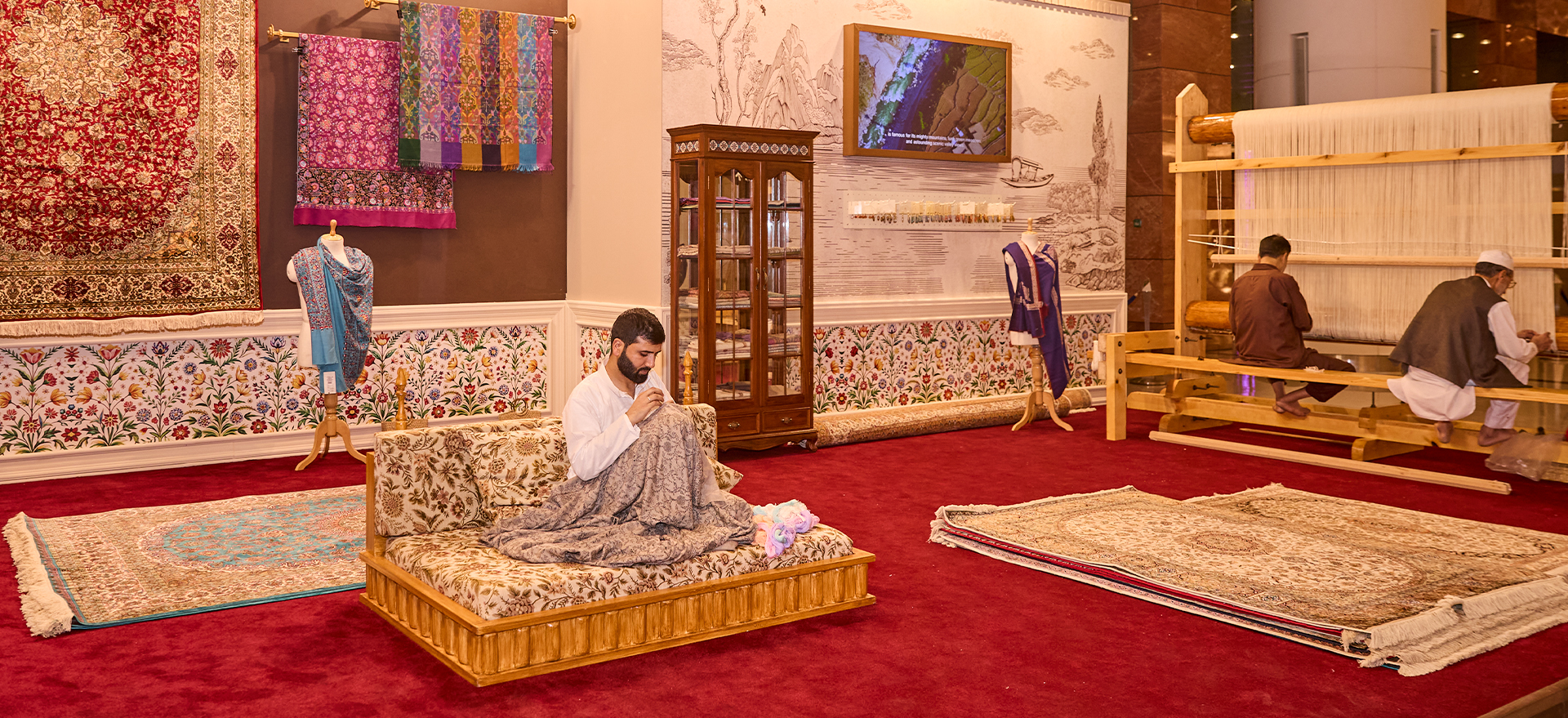
Sozni & Kal Baffi
Kal Baffi or the art of crafting hand-knotted carpets is an exquisite art form whose origins can be traced back to the 15th century, when Persian artists taught the technique to the residents of Kashmir. Since then, Kashmiri artisans have elevated the craft to new heights, and today, Kashmiri Kal Baffi carpets are renowned across the world. Traditional designs are influenced by both Persian patterns and local flora and fauna – motifs and colours frequently embodying the natural beauty of ‘Heaven on Earth’. These carpets are often adorned with ‘sozani’ embroidery, an intricate needlework said to have originated in the 14th century. Brought to life by artists known as sozankars or roufghars, the nomenclature of this delicate artform – also found on shawls stoles, and mufflers – is derived from the term ‘sozan’, meaning needle.
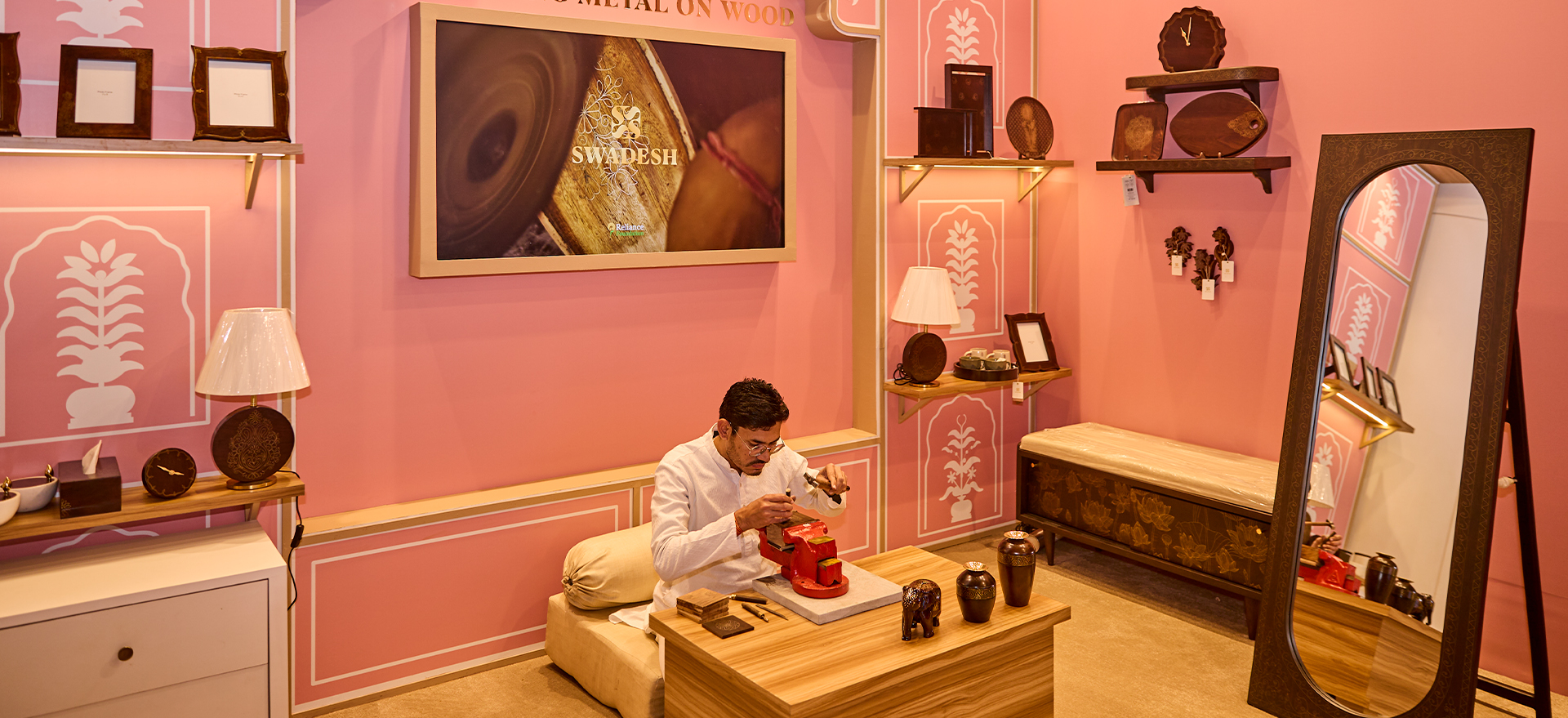
Tarkashi
With roots in Rajasthan, Tarkashi is the art of metal wire inlay work on wood, given form as decorative designs. The term is derived from the Hindi words ‘tar’, meaning wire, and ‘kashi’, meaning inlay. Tarkashi patterns usually include geometric forms or florals with inspirations from Mughal art, created when an artisan transfers a design from a piece of paper onto a block of wood. The artisan then carves deep, thin grooves which are inlaid with flattened and gleaming metal wires, hammered into position by exceptional craftsmanship. Swadesh showcases this unique artform through a special range of furniture, jewellery, and décor.

